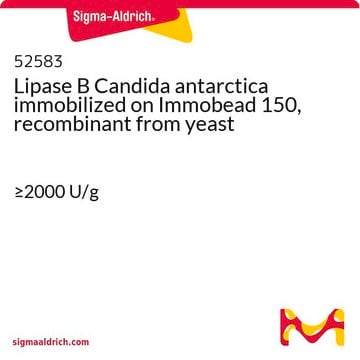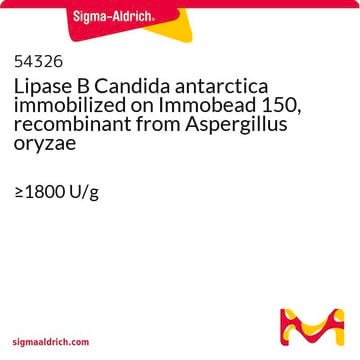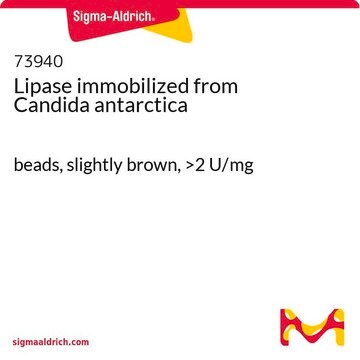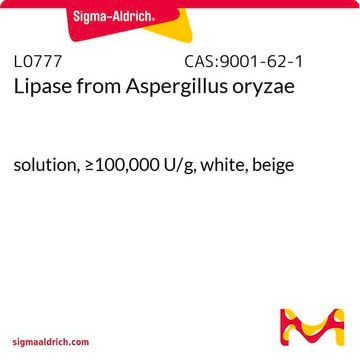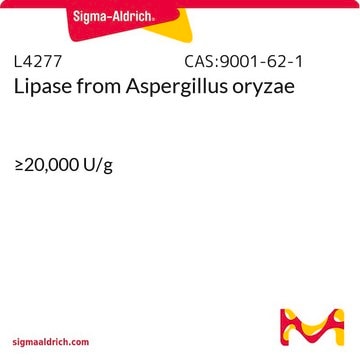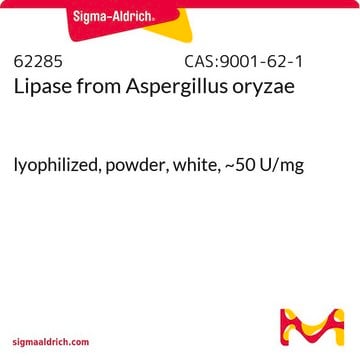62288
Lipase B Candida antarctica, recombinant from Aspergillus oryzae
powder, beige, ~9 U/mg
About This Item
Recommended Products
recombinant
expressed in Aspergillus oryzae
Quality Level
form
powder
specific activity
~9 U/mg
mol wt
33 kDa
color
beige
storage temp.
2-8°C
InChI
1S/C11H9N3O2.Na/c15-8-4-5-9(10(16)7-8)13-14-11-3-1-2-6-12-11;/h1-7,16H,(H,12,14);/q;+1/b13-9-;
InChI key
QWZUIMCIEOCSJF-CHHCPSLASA-N
Looking for similar products? Visit Product Comparison Guide
General description
Application
- as a standard to characterize the enzymatic properties of D5-CalB
- as an efficient biocatalyst to start the reaction to obtain (R)-ester via esterification of racemic secondary alcohol
- to investigate a “green” recycling route for polybutylene succinate (PBS) based on reactive extrusion
- to compare the esterification yield with adsorbed CaLB (aCaLB) and covalently immobilized CaLB (cCaLB)
Biochem/physiol Actions
Candida antarctica lipase B (CALB) possesses wide substrate specificity, high activity and high enantioselectivity, hence it is considered as a major enzyme in biotechnology. It also has the capability to perform in aqueous and non-aqueous reaction environments. CALB is used in transesterification, kinetic resolution and polymerization reactions.
Unit Definition
Signal Word
Danger
Hazard Statements
Precautionary Statements
Hazard Classifications
Resp. Sens. 1
Storage Class Code
11 - Combustible Solids
WGK
WGK 1
Flash Point(F)
Not applicable
Flash Point(C)
Not applicable
Personal Protective Equipment
Certificates of Analysis (COA)
Search for Certificates of Analysis (COA) by entering the products Lot/Batch Number. Lot and Batch Numbers can be found on a product’s label following the words ‘Lot’ or ‘Batch’.
Already Own This Product?
Find documentation for the products that you have recently purchased in the Document Library.
Customers Also Viewed
Articles
Efficient epimerization catalyst for enzyme mediated dynamic kinetic resolution (DKR).
Our team of scientists has experience in all areas of research including Life Science, Material Science, Chemical Synthesis, Chromatography, Analytical and many others.
Contact Technical Service